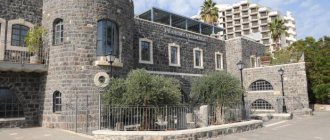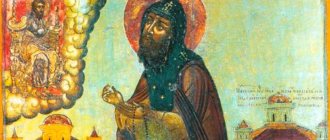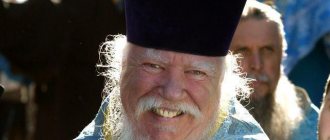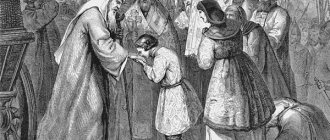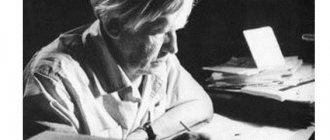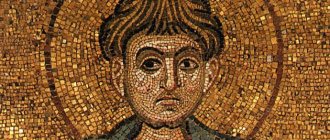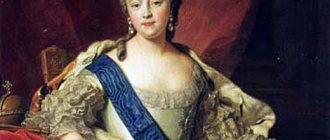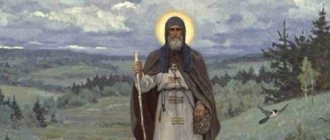Childhood
Orthodox saint Dmitry of Rostov was born in the winter of 1651 in the village of Makarovo, located near Kyiv. They named him Daniel. His family was very pious, the boy grew up as a deeply religious Christian. In 1662, his parents moved to Kyiv, and he entered the Kiev-Mohyla College to study. Here he successfully studied Latin and Greek, as well as a number of classical sciences. In 1668, quiet and in poor health, Daniel became a monk at the Cyril Monastery and received the name Dmitry. He underwent monastic obedience until 1675.
early life
Saint Demetrius of Rostov (name in Baptism - Daniel) was born in the town of Makaryev (located near the city of Kyiv), in the family of the military centurion Tuptala Savva Grigorievich, in December 1651.
Daniel's parents were distinguished by their firmness of faith and piety. From an early age, they instilled in their son respect for God's law, devotion to the Church and the Fatherland.
Due to his father’s frequent absences related to military duty, his mother played the main role in Daniel’s upbringing. Subsequently, he repeatedly recalled her as a virtuous daughter of the Church.
Wanting to give their son a decent education, his parents enrolled him in the Kiev Fraternal School (founded through the efforts of Metropolitan Peter Mogila, this school was famous throughout the area; subsequently, the Theological Academy was formed on its basis).
During the learning process, Daniil showed extraordinary abilities. Thanks to his innate abilities, diligence, and determination, he more than once became an object of admiration from teachers and administration. In the process of completing the educational course, he mastered several languages (Greek, Latin, Polish, Hebrew), mastered the rules of rhetoric and poetics, and became imbued with the teachings of the God-bearing fathers.
Along with theoretical disciplines, Daniel sought to absorb and assimilate practical skills of life in Christ. He preferred a quiet and silent stay in church, reading edifying literature, and mental prayer to noisy companies and pleasure walks with his peers.
When in 1665 the Polish conquerors, having captured Kiev, set fire to the Brotherhood monastery and school, Daniel was forced to return to his parental home. When he returned, he did not abandon his studies, but with even greater spiritual impulse he devoted himself to self-education.
During this period, he regularly participated in temple services, studied the Books of Scripture, and listened to the instructions of the shepherds. Gradually, with the assistance of God, he turned his heart towards monasticism.
Preacher of the Word of God
In 1669, Dmitry Rostovsky, whose biography is full of various events, was ordained a hierodeacon. In 1975, Bishop Lazar Baranovich summoned him to Chernigov and, having ordained him as a hieromonk, appointed him as a preacher at the Assumption Cathedral. From here Father Dmitry traveled to Slutsk and Vilna, where he worked hard for the glory of God. Soon he gained the reputation of a very talented preacher, and he was often invited by worldly and spiritual authorities. After the death of his friend, the founder of the Slutsk Monastery, monk Skachkevich, he returned to his homeland - to Little Russia in Baturino.
Abbess and the beginning of life's work
In Little Russia, Saint Dmitry of Rostov settled in a monastery in Baturino. However, the Bishop of Chernigov soon drew attention to him. In 1681, the 30-year-old preacher became abbot of the Maksanovsky monastery, and after some time of the Baturinsky monastery. Father Dmitry stayed in this position for only a short time. In 1683 he moved to the Kiev Pechersk Lavra. Here, in 1684, the saint began the main work of his life - the compilation of the “Chets-Menya”. After some time, he was appointed rector of the Baturinsky Monastery for the second time. But in 1692 he moved to Kyiv again. Then he was successively appointed abbot of the Glukhov, Kirillov and Eletsky (Chernigov) monasteries. In 1700, he was summoned to Moscow, where he first met with Peter the Great, and was appointed Metropolitan of Rostov. The dedication took place on March 23, 1701.
Notes
- ↑ 1 2 Shlyapkin I.
Demetrius St.
Metropolitan of Rostov // Russian Biographical Dictionary
- St. Petersburg: 1905. - T. 6. - P. 389-394. - Krumming A. A.
Saint Demetrius of Rostov: exact date of birth // Messages of the Rostov Museum. - 1992. - Issue. 3. - P. 6. - ↑ 123
Saint Demetrius of Rostov. - Dimitri (Tuptalo) (Russian Orthodoxy website) Archived copy dated October 31, 2007 on the Wayback Machine
- Solovyov S. M.
History of Russia since ancient times. - Fedotova M.A. Life of St. Demetrius of Rostov // Ancient Rus'. Questions of medieval studies. 2007. No. 3 (29). P. 114.
- Fedotova M.A. Life of St. Demetrius of Rostov // Ancient Rus'. Questions of medieval studies. 2007. No. 3 (29). pp. 114-115.
- There is a known decree of the Synod on September 30, 1798, approving the celebration of Theodosius of Totem, but it, in the opinion of E. E. Golubinsky, only confirmed the previous local veneration of the saint (Golubinsky E. E. History of the canonization of saints in the Russian Church // Theological Bulletin. 1894. T. 3 No. 9. P. 336-337).
- Likhachev D. S.
History of Old Russian literature // Selected works: In 3 volumes. T. 1. L., 1987. P. 266. - Nativity scene of Alexey Strelnikov (unspecified)
(inaccessible link). Retrieved January 11, 2008. Archived April 23, 2008. - ↑ 1 2 3 4 Krylov A. O.
Understanding holiness in the works of St. Demetrius of Rostov: some observations // Christian reading. - 2022. - No. 5. - P. 51-60. - John (Kologrivov), hieromonk. Essays on the history of Russian holiness. Part three. Russian holiness in the Petrine era and later. Saint Demetrius of Rostov (1651-1709)
- Biography of Saint Demetrius of Rostov // Biographies of memorable people of the Russian land in the 10th-20th centuries.
- Krylov A. O.
Chetya-Minea of Metropolitan Dimitry of Rostov: (On the issue of confessionalization in Russia at the turn of the 17th-18th centuries) // Bulletin of Moscow State University. Episode 8. History. 2013. No. 1. P. 51 - 64 - Derzhavin A., prot.
“The hearts of the faithful rejoice”: Cheti-Minea Demetrius, Met. Rostovsky, as a church-historical and literary monument: in 2 hours. - Moscow, 2006. - P. 298. - 384 p. - M. A. Fedotova, Ya. E. Zelenina.
Dimitri // Orthodox Encyclopedia.
- M., 2007. - T. XV: “ Dimitri
- Additions to the “Historical Acts”. — P. 8-30. — 752 p. — 39,000 copies. — ISBN 978-5-89572-026-4. - Skarga, Peter // Encyclopedic Dictionary of Brockhaus and Efron: in 86 volumes (82 volumes and 4 additional). - St. Petersburg, 1890-1907.
- Archpriest Georgy Florovsky
Paths of Russian theology II. Meeting with the West 1. At a crossroads. - Kostomarov N.I.
Russian history in the biographies of its main figures. M. 1991. T. 3. P. 524. - Pogozhev E. N. (Poselyanin)
. Russian Church and Russian ascetics of the 18th century. - Russian line / Library of periodicals: On the meaning of the Chetyi-Menaion of St. Demetrius for the Russian people (Russian). rusk.ru. Date accessed: November 9, 2022.
- Preface // Lives of the saints in Russian, set out according to the guidance of the Chetyih-Menya of St. Demetrius of Rostov: 12 books, 2 books. add. - M.: Moscow. Synod. typ., 1903-1916. - Vol. I: September.
Metropolitan of Rostov
In 1703, Dmitry Rostovsky, whose biography was closely connected with this parish until his death, arrived at a new place of service. Here he faced many difficulties, the main of which was the interference of secular authorities in the affairs of the parish. Shortly before the appointment of Father Dmitry, the Monastic Order was recreated in the city, managing church property and supervising the monks and almshouses. The saint in Rostov was also very unpleasantly struck by the rudeness and ignorance of not only the common people, but also the ministers of the Church. The priests did not reverence the saints at all, treated the poor with contempt, divulged the secret of confession, etc. Seeing such a disorder, Father Dmitry zealously set about correcting the state of affairs. He gave instructions, explained what the duty of a priest meant, and gave sermons to the people.
One of his main concerns was a school for the children of Church ministers and the poor. Education here was completely free. In the school opened by Metropolitan Dmitry, as in Kyiv, Greek and Latin were taught and theatrical performances were shown. The first graduates left its walls in 1706. Unfortunately, the school was closed that spring.
On October 28, 1709, Father Dmitry Rostovsky died. He was buried in the cathedral church of Rostov, next to his predecessor, Saint Joasaph. According to the will of the Metropolitan, drafts of his unfinished books were placed in the coffin. Tsarina Paraskeva Fedorovna herself, the widowed wife of Tsar Ivan, brother of Peter the Great, arrived at the saint’s funeral.
Opening of the first seminary
In an effort to eradicate the shortcomings that he saw among the clergy, the saint decided on the need to open a school at the bishop's house that would train and educate future priests. Arriving in Rostov, he gathered about 200 children of clergy and, dividing them into 3 classes, appointed a teacher in each. It often happened that the ascetic himself conducted classes with his students. To encourage children's zeal, St. Demetrius paid the poorest of them “money” every day for their diligence. The school was created on the model of the so-called fraternal schools, where the basis of the relationship between teachers and students was mutual respect.
Interesting fact
Saint Demetrius personally wrote scripts for theatrical productions for students, the most popular of which is considered to be “Drama for the Nativity,” or “Christmas Drama,” which is still presented today by actors of the Moscow Chamber Theater in different countries of the world.
Relics of the Saint
In 1752, they decided to make renovations to the cathedral church. During its execution on September 21, while repairing the floor, the incorrupt body of Father Dmitry was discovered. It was a real miracle. The walls of the burial were damp. The saint's oak coffin and the manuscripts inside had completely decayed. The body of the saint himself, as well as his rosary, miter and sakkos turned out to be incorruptible.
After some time, miraculous healings from many diseases began to occur at the relics of the saint, which was reported to the Synod. By order of the latter, Archimandrite Gabriel of Simonov and Metropolitan of Suzdal Sylvester arrived in Rostov. They witnessed the relics and the healings they performed. On April 29, 1757, Metropolitan Dmitry of Rostov was canonized.
On May 25, 1763, the saint’s relics were transferred to a silver shrine, where they remain to this day. The reliquary was made by order of Empress Catherine the Second, who carried it to the installation site personally, together with the holy fathers.
What do they pray to St. Demetrius of Rostov for?
After the relics of Demetrius of Rostov were found, people began to come to them and ask for help. Many miraculous healings occurred at the holy relics, described in history and told by eyewitnesses.
Saint Demetrius, Metropolitan of Rostov, is considered the patron saint of widows and orphans, which is why people most often pray to him for family happiness and peace of mind. The saint is also approached to resolve family conflicts and problems with children. People also turn to the relics of Demetrius of Rostov for healing from serious illnesses. Believers pray to Demetrius of Rostov, asking for help in troubles and need.
"Lives of the Saints" by Dmitry Rostovsky
The saint wrote this book over 20 years. The result was a work in 12 volumes. It describes the life, miracles and feats of many great Christian saints. "Cheti-Minea" of St. Dmitry became an edification for all Orthodox Christians who want to follow the path of piety.
The stories in this book are told in order of the months and days within them. Hence their name “menaia” (Greek month). “Cheti” in Church Slavonic means “to read”, “intended for reading”. The “Lives of the Saints” were compiled by Father Dmitry partly from the work of Macarius. At the moment, several Menaia are recognized in the Orthodox Church (hieromonk German Tulumov, Chudovsky, Ionna Milyutin, etc.). However, the Lives of the Saints by Dmitry of Rostov are the most revered and widespread. This book was written in a very literate Church Slavonic language.
Literary heritage
The earliest surviving work of Rostovsky is “The Irrigated Fleece,” which tells about the miraculous image of the Mother of God located in the Chernigov Trinity-Ilyinsky Monastery.
The Metropolitan’s main creation is considered to be “The Lives of the Saints,” or “Cheti-Menaia,” a collection of books that reveal the biographies of Old Testament, Russian, South Slavic and pan-Orthodox saints, as well as their exploits. Work on the work lasted almost 20 years.
View this post on Instagram
A post shared by Orthodox Life (@orthodoxlive) on May 4, 2020 at 12:10pm PDT
Icon of Demetrius of Rostov
Labor resembles a calendar, where for each date there are from 1 to several stories. It contains the lives of John Chrysostom, Nicholas the Pleasant, Demetrius of Thessaloniki and many personalities who influenced religion.
Another important work in Rostovsky’s bibliography is considered to be “The Cell Chronicler,” based on the Bible, the works of European chroniclers and church writers. All samples of the saint’s creativity are available on the ABC of Faith website.
Other books of the saint
Another famous work of the Metropolitan of Rostov is “The Search for the Bryn Faith.” This book was directed against the Old Believers. This work, unlike “Minea,” was not very successful. He, of course, did not convince the Old Believers, but he caused a surge of hatred on their part.
Among other things, Saint Dmitry of Rostov actively collected historical information about his diocese and the country as a whole. For example, he worked on compiling a chronology of the Slavic people. He also wrote such books as “The Irrigated Fleece”, “Discourse on the Image of God and the Likeness in Man”, “Diarias”, “A Brief Martyrology”, “Catalogue of Russian Metropolitans”. Various kinds of prayers and instructions belong to his pen.
The fight against schismatics
At that time, in the impenetrable forests of Bryn there were settlements of Old Believers, who, through preachers, spread their teachings among the wavering inhabitants of the diocese. Saint Demetrius wrote about them:
“The demonic birds - schismatics, who flew away from their nest in Bryn, taught many to run away from the Holy Church... lying and deceiving ordinary men and women and saying: now the church is no longer a church, priests are not priests.”
Not wanting to allow the destruction of inexperienced souls, the archimandrite compiled an essay “Search for the schismatic Bryn faith,” in which he explained the essence of the schism and proved that the teachings of the Old Believers were not pleasing to God. In the final part of the work, the saint prayed to the Lord for the return to the bosom of the true Church of all those who had fallen away from it. Copies of this work were distributed to diocesan parishes.
Church of St. Dmitry Rostovsky in Ochakovo
Many saints are revered in Russia. Dmitry Rostovsky, of course, is one of them. Many temples are dedicated to him. For example, there is such a structure in Ochakovo. In 1717, a wooden church was built here and consecrated in honor of the Blessed Virgin Mary. In 1757 the village changed hands. He erected a new stone church next to the wooden one in the name of Metropolitan Dmitry. This church has come down to us almost unchanged. It was built in the beautiful Russian Baroque style. A high bell tower is connected to the temple through the refectory.
History of the Church of St. Dmitry is very rich. In 1812 there was a fire in Ochakovo. At the same time, the old wooden church of the Blessed Virgin Mary burned down in the fire. Ekaterina Naryshkina, who bought the village in the same year, according to tradition, decided to open a new temple in its place, and rebuilt one of her estates into it. The church was consecrated in honor of the Holy Trinity and was presumably assigned to the Church of St. Dmitry.
In 1926, this religious building was closed by decision of the authorities. It is known that in 1933 the Church of Dmitry of Rostov was converted into a grain warehouse and had a completely deplorable appearance. The cross was removed from it, and a five-pointed star was painted on one of the pediments, which was later very difficult to erase.
In 1972, they decided to restore the church. The work lasted about 6 years. In 1992, the Church of Dmitry of Rostov was returned to believers. Those Orthodox Christians who want to visit this ancient church should go to General Dorokhov Street, 17 in Moscow.
Story
Spaso-Yakovlevsky Dimitriev Monastery in Rostov the Great. Photo by P. N. Rubtsov
His rapid rise is directly related to the canonization and glorification of Metropolitan Demetrius, who chose this monastery as his burial place.
Saint Demetrius of Rostov. Painting of the altar of the Dimitrievsky Church of the Spaso-Yakovlevsky Monastery. 19th century
Metropolitan Dimitry (1651 - 1709) - head of the Rostov-Yaroslavl diocese, a famous preacher and spiritual writer. A native of the Kyiv land, he ended his life in Rostov. His life was entirely devoted to serving the Church - at the age of 17 he became a monk, was a preacher and abbot of many monasteries, created a grandiose church work - a collection of the lives of saints, and ruled the ancient and noble Rostov bishop's see. He was endowed with an abundance of creative talents - he became famous as a spiritual writer, historian, theologian, and playwright. He left behind a huge literary heritage.
Chetya-Minea of St. Demetrius of Rostov. 19th century edition
Merciful, humble, pure in heart, throughout his entire life he served as a high moral example. The enormous moral message inherent in his creations, primarily in the Four Menaions, earned him fame as an educator of human souls.
Metropolitan Dimitri chose the Yakovlevsky Monastery as the place of his burial, which was confirmed in his will. On October 28, 1709, he died and was buried in the monastery he had chosen.
In September 1752, the relics of Metropolitan Demetrius were found; five years later, in April 1757, he was canonized. The canonization of Metropolitan Demetrius became the first canonization in the history of the Russian Orthodox Church during the synodal period. The Rostov ruler became the first saint of Russia in modern times.
The burial of the bishop in the monastery cathedral and the discovery of his relics, the canonization of the saint and the widest spread of his veneration were the key to the prosperity of the Yakovlevsky monastery. An ordinary, unremarkable provincial monastery overnight turned into one of the most famous monasteries in the country, guarding a great shrine.
Silver shrine of St. Demetrius, made at the direction of Empress Elizabeth Petrovna. It was into this shrine that the relics of the saint were transferred during a visit to the monastery by Catherine II
Many pilgrims flocked here to the miraculous relics of St. Demetrius. Among them were many representatives of the royal family. Thus began a pilgrimage to the Yakovlevsky Monastery of representatives of the Royal House of Romanov.
This tradition was started by Empress Catherine II, who arrived at the Yakovlevsky Monastery in 1763 to celebrate the transfer of the saint’s relics into a silver shrine.
Portrait of Empress Catherine II
After her, in the 19th and early 20th centuries, almost all Russian emperors and many great princes and princesses visited here on pilgrimage. To date, 20 facts of visits to the Spaso-Yakovlevsky Monastery by members of the imperial family have been documented: 6 times by ruling sovereigns and empresses, once by the Dowager Empress, 13 times by grand dukes and princesses. In the period from 1763 to 1916, that is, over 150 years, four emperors, three empresses and more than twenty representatives of the grand ducal family visited here. The monastery was visited twice by Empress Catherine II and Emperor Alexander II, and three times by Grand Duchess Martyr Elizabeth Feodorovna.
Particularly memorable for the monastery was the arrival of Emperor Nicholas II, which occurred on May 22, 1913 and turned out to be the last visit to the monastery by the last Russian emperor.
Almanac published for the 300th anniversary of the House of Romanov. 1913
In 1913, the Russian Empire celebrated the 300th anniversary of the reign of the House of Romanov. As part of the anniversary celebrations, a trip was organized for the imperial family to the Nizhny Novgorod, Kostroma, Yaroslavl and Moscow provinces to visit places associated with the election to the kingdom of the first representative of the new reigning family - Tsar Mikhail Fedorovich. Rostov, the oldest city in the Yaroslavl province, was also included in the route of this trip.
Emperor Nicholas II. Circa 1907
In the diary kept by Emperor Nikolai Alexandrovich, several meager lines are devoted to his impressions of visiting the Rostov shrines. “May 22nd. Wednesday. At 10 o'clock we arrived in Rostov. Alix was very tired and, in addition, she had a sore throat, so she lay there all day. After the meeting, I drove with the children in a car to the ancient city of Rostov the Great. I visited the Assumption Cathedral, listened to the famous ringing of bells, walked along the Kremlin wall to the White Chamber and the Prince's Tower, examining the internal churches along the way. Returning to the train, we stopped at the Church of the Annunciation, where the miraculous icon of the Tenderness of the Mother of God appeared in 1910. After breakfast, I went into the city again and examined the Yakovlevsky Monastery. on the shore of Lake Nero and in 3 ver. the old wooden church of St. John the Evangelist on Ishna. Got back on the train with the kids at 4?. I drank tea and studied. AT 6? I went with my daughters to the Kremlin to the beautiful Church of the Resurrection of Christ for the all-night vigil. We left Rostov at 8 o’clock.”
Rostov Assumption Cathedral. May 22, 1913
However, this day was long-awaited and significant for both the city and the monastery. They prepared for it long and carefully. The objects to be shown were selected in advance. The places where the sovereign would visit were to be the cathedral, the Rostov Kremlin and the exhibitions of the Museum of Church Antiquities, the Spaso-Yakovlevsky Monastery and two churches of the 17th century - the city Church of the Annunciation and the rural Church of St. John the Evangelist in the vicinity of Rostov. The travel route was laid out in advance and the meeting ceremony was developed.
Emperor Nicholas II in the Spaso-Preobrazhensky Monastery. Yaroslavl, May 21, 1913
The emperor’s acquaintance program with Yaroslavl, by the way, was much more eventful, which is not surprising, taking into account the difference in the scale and significance of the cities. In Yaroslavl, the distinguished guests were going to be shown the cathedral, the bishop's house in the Spassky Monastery, the Kazan Monastery and two churches of the 17th century - Elijah the Vice and John the Baptist, about which, by the way, the sovereign said that they were “one more beautiful and better than the other.” The Emperor was expected to get acquainted with an orphanage founded in honor of the 300th anniversary of the Reigning House and a specially organized exhibition, clearly demonstrating the achievements of the province in the field of agriculture, crafts and industry, a trip to the Tolga Monastery and, finally, a visit to a social reception at the noble assembly.
The imperial family was supposed to arrive in Rostov by train heading from Yaroslavl towards Moscow, so the meeting and seeing off of distinguished visitors took place at the Rostov station. Subsequent movements around the city were carried out by car.
The imperial family in the Kazan monastery. Yaroslavl, May 21, 1913
In preparation for the arrival of the emperor, Rostov was transformed, although not all of it, but only that part of it that was going to be shown to the sovereign. The facades of those houses that were located along his route were repaired, cleaned and repainted. Likewise, the repairs affected only those streets along which the imperial cars were supposed to pass, they were leveled and filled with fresh yellow sand. Immediately before arrival, the houses were decorated with flags and garlands woven from green branches.
Rostov Kremlin.
Photo by S. M. Prokudin-Gorsky. 1911
So, a qualitative improvement in both the external appearance of the buildings and the roadways took place only along the route of the imperial motorcade, namely: from the station square along Blagoveshchenskaya Street, further along the boulevard, along the building of the new gymnasium - to the city center, through Emelyanovsky Row and Cathedral Square - to the Holy Gate, leading to the Assumption Cathedral and the former bishop's courtyard. Then across the Kamenny Bridge along the boulevard and Pokrovskaya Street, to its intersection with Rozhdestvenskaya, and along Malaya Yakovlevskaya Street - to the Spaso-Yakovlevsky Monastery, and from there along the Moscow Highway - to the wooden Church of St. John the Theologian in the village of Bogoslov.
Blagoveshchenskaya street in Rostov. May 22, 1913
The Spaso-Yakovlevsky Monastery took the preparations for the imperial visit more seriously and responsibly. Work to improve the external appearance of the monastery began in advance and was carried out on a wide front.
The main attention was paid to decorating the interiors of the old Conception and new Dimitrievsky monastery cathedrals. In the Conception Church, the wall paintings were washed and restored, new frames were installed and the entrance doors were replaced. In the Demetrius Church, a marble platform was installed for the new, second silver shrine of St. Demetrius and marble vestments were made for the thrones of two side churches in the refectory.
The gilding of the large dome and the replacement of the roof of the Conception Church have been completed. The roofs of residential buildings were painted with copper, and the domes of temples were covered with ultramarine paint.
All the monastery buildings were cleaned and whitewashed anew - churches, cell buildings and fences, as well as all the buildings that belonged to the monastery but were located outside its walls - a hotel, a school, several outbuildings.
The paths of the central monastery courtyard were covered with asphalt. A new bell weighing 155 pounds appeared on the bell tower.
Cathedral of Demetrius of Rostov in the Spaso-Yakovlevsky Monastery. Early 20th century
Especially for the royal arrival, they purchased a new sacristy, which included full bishop's vestments for the rector, 10 priestly vestments, 1 archdeacon's vestment, 4 deacon's vestments and 4 sexton's vestments. To emphasize the correspondence with the date being celebrated, the 300th anniversary of the reign of the Romanov dynasty, the new sacristy was deliberately stylized as antique. There is evidence from Bishop Joseph that the monastery clergy greeted the sovereign in new vestments, made in the style of Rostov church clothes of the 17th century.
In general, by the arrival of the emperor, the Spaso-Yakovlevskaya monastery was transformed - the domes shone, the walls turned white, the temples became more beautiful, and the courtyard became cleaner. However, it should be taken into account that even before the start of all the above works, the condition of the monastery was more than satisfactory, since in 1909 it significantly updated its appearance, preparing for the anniversary celebrations in honor of the 200th anniversary of the death of St. Demetrius.
Meeting Emperor Nicholas II at the Rostov railway station
The imperial family arrived in Rostov on May 22, on the eve of the celebration of St. Leontius of Rostov, whose memorial day has long been considered one of the main church holidays in Rostov. Due to ill health, Empress Alexandra Feodorovna was unable or unwilling to take part in the acquaintance with Rostov; upon arriving in the city, she never left her carriage.
Concert of Rostov bells
On the Cathedral Square of Rostov the Great
In the first half of the day, the emperor with his children and a large retinue visited the Assumption Cathedral and the Rostov Kremlin. The sovereign was accompanied by the head of the Yaroslavl diocese, Archbishop Tikhon (Bellavin), the future Russian patriarch, canonized. The emperor examined the cathedral, bowed to its shrines, and examined the antiquities of the sacristy. On Cathedral Square, a concert of bell ringing from the cathedral belfry, performed on huge ancient bells, the heaviest of which weighed 32, 16 and 8 tons, was given especially for the guests.
Museum of Church Antiquities.
Photo by S. M. Prokudin-Gorsky. 1911
Then the emperor was shown the Rostov Kremlin - the former bishop's residence and the Museum of Church Antiquities located within its walls. The Emperor walked along the Kremlin passages, visited ancient temples, climbed the observation tower, and got acquainted with museum exhibitions.
The second half of the day, according to the approved regulations, was devoted to getting to know the Spaso-Yakovlevsky Demetrius Monastery.
Bishop of Uglich Joseph Petrov (1872 - 1937)
The main source of information about how the imperial visit to this monastery took place is the memoirs of its rector, Bishop Joseph (Petrovykh; 1909 - 1926), the first vicar of the Yaroslavl diocese. In the future, we will repeatedly refer to this valuable documentary evidence.
For example, this is how Yakovlev’s abbot described the anticipation of the imperial arrival: “An hour before the sovereign’s arrival, the loud bell of the monastery notified everyone of the approach of a joyful moment. ... The ancient Conception Cathedral, richly decorated with carpets, just washed from top to bottom and consecrated with three chandeliers with candles in wax yarago, looked extremely cozy and festively cheerful. Soon the preparatory bustle subsided everywhere, and sacred silence and awe of anticipation reigned. It became quiet in the temple. Only the candles crackled merrily all around, and the vigilant guard of the monastery belfry hummed in the distance, with each blow announcing the greater and greater proximity of the royal pilgrims.”
Cathedral of the Conception of St. Anna of the Spaso-Yakovlevsky Monastery.
Photo by S. M. Prokudin-Gorsky. 1911
The Spaso-Yakovlevskaya monastery greeted the royal family with the ringing of bells. The imperial car drove into the monastery and stopped at the entrance to the Conception Cathedral, on the steps of which Bishop Joseph met Nicholas II.
At the relics of St. A prayer service was served for Demetrius. Nikolai Alexandrovich paid special attention to the ancient murals of the cathedral. This is not surprising, given that shortly before his arrival in Rostov, he donated three thousand rubles to the Spaso-Yakovlevsky Monastery, specifically intended for washing these frescoes. The emperor was interested in the stone iconostasis and the silver shrine of St. Demetrius.
On the porch of the Conception Church, the royal family stopped at the tomb of Elder Amphilochius, who served as a funeral hieromonk for more than 40 years at the relics of St. Demetrius.
From the Conception Cathedral, the emperor and his children, surrounded by his retinue, went down to the Resurrection Church, located in the basement of the Yakovlevsky Church. Founded a little over a year ago, this church was designed as a kind of reliquary temple containing copies of the main Christian shrines, the main one of which was the likeness of the Holy Sepulcher. It attracted the special attention of the sovereign. As Bishop Joseph wrote: “Despite the very narrow entrance to the cave of the Sepulcher, the entire royal family and the sovereign went up there at the same time and remained there for a long, long time in a tender and prayerful mood. Illuminated by 33 lamps (according to the number of years of Christ) and decorated with flowers, lamps and sacred images, the cave makes a strong impression on the soul, transferring the thought to the authentic places and setting of the death and burial of the Savior.”
Having left the Church of the Resurrection, Emperor Nikolai Alexandrovich and his children went through the Water Gate to the shore of Lake Nero.
Emperor Nicholas II with children in the Spaso-Yakovlevsky Monastery. May 22, 1913
Then the distinguished guests visited Demetrius Cathedral. Its enormous size and unusual interior design, the iconostasis in the form of a large triumphal arch, undoubtedly attracted their attention.
Interior of the Cathedral of St. Demetrius of Rostov.
Photo by S. M. Prokudin-Gorsky. 1911
Here were the relics of the monastery, transferred from the sacristy and put on display for the sovereign, including personal belongings and manuscripts of St. Dimitri. Along with other rarities, the sovereign was shown a small 4-pound bell, called the “royal” bell, donated to the monastery in the mid-17th century by Tsar Alexei Mikhailovich.
Spaso-Yakovlevsky Dimitriev Monastery.
Photo by P. N. Rubtsov
In memory of his visit to the monastery, the emperor was presented with icons, enamel portraits, photographs and books. After visiting the Dimitrievsky Church, the royal family left the monastery to the sound of bells.
Church of St. John the Evangelist on the Ishna River.
Photo by S. M. Prokudin-Gorsky. 1911
The demonstration of Rostov attractions ended with a visit to the wooden Church of St. John the Evangelist on the Ishna River. The temple, built at the end of the 17th century, has preserved both the interior and the atmosphere of an ancient monument.
Resurrection Church of the Rostov Kremlin.
Photo by S. M. Prokudin-Gorsky. 1911
After a short rest on the train in the evening, the emperor returned to the Rostov Kremlin in order to attend the festive all-night vigil on the eve of the Feast of the Ascension of the Lord, which was served especially for him in the Resurrection Church, which he especially liked. This temple, decorated with first-class fresco paintings, is indeed extremely beautiful; its unique decoration embodies the spirit of antiquity.
At eight o'clock the royal train left Rostov, continuing its journey to Moscow.
Imperial family. 1913
Let's summarize some results. As is known, the journey of the imperial family to places associated with the calling of the founder of the dynasty to the kingdom and made in memory of the 300th anniversary of this event had a clear historical orientation. It was a kind of immersion in the past, an attempt to join or at least get closer to the times of the reign of the dynasty, to the era of the first Romanovs. It is no coincidence that in both Rostov and Yaroslavl the sovereign was shown churches of the 17th century.
As for the Spaso-Yakovlevsky Monastery, it was difficult for it to fully correspond to this historicity, since its heyday, its shrines and attractions belonged to the new era. However, here he did not stand aside - the sovereign was met by the brethren, dressed in new clothes made in the ancient style, the emperor was shown the ancient paintings of the old cathedral, washed and renewed specially for this purpose. We can say that in demonstrating itself, the monastery relied on its main shrines, as well as royal and imperial contributions, such as a silver shrine, a royal bell and more.
Memo in honor of the 300th anniversary of the House of Romanov. 1913
Spaso-Yakovlevsky became the only Rostov monastery chosen for a visit by Emperor Nicholas II. The monastery was carefully prepared for this event. Renovating all the facades, gilding the dome, repairing and painting the roofs, washing the murals in the old cathedral, and laying the paths required a lot of time and significant funds. All the preparatory work was organized by Bishop Joseph, he also met the distinguished guests and accompanied them while visiting the monastery sights, which, judging by the testimony of the abbot, made a proper impression on the emperor, especially the new Church of the Resurrection and a copy of the Holy Sepulcher - the pride of Bishop Joseph.
It is important to emphasize that from the second half of the 18th century, the Spaso-Yakovlevsky Monastery was visited by members of the imperial family more often than the Assumption Cathedral and other ancient monasteries of the city. In general, this indicates a shift in value orientations from ancient shrines to new relics, the focus of which in Rostov and, more broadly, in the Yaroslavl diocese was the Spaso-Yakovlevsky Dimitriev Monastery, which assumed the functions of the new spiritual center of both Rostov and the entire diocese.
Spaso-Yakovlevsky Dimitriev Monastery.
Photo by P. N. Rubtsov
In conclusion, let us cite one interesting chronological coincidence. As already mentioned, the first imperial visit to the Yakovlevsky Monastery was the arrival here of Empress Catherine II, the last was the arrival of Emperor Nicholas II. Exactly 150 years passed between these events, almost to the day...
*
Today, as in past times, the Spaso-Yakovlevsky Demetrius Monastery is the main center of veneration of St. Demetrius of Rostov. This is confirmed by the project “Educational mobile exhibition “The Life, Works and Times of Metropolitan Demetrius of Rostov”[1], which in 2022 is being carried out by the Spaso-Yakovlevsky Monastery with the aim of attracting the attention of our contemporaries to the personality and heritage of St. Demetrius - the “new and great wonderworker” , as it is sung in the akathist dedicated to him.
Poster for the site “St. Demetrius of Rostov: life, works, era”
The components of this large project are a bright, interesting exhibition, which was successfully demonstrated during May - November of this year in different cities of the Yaroslavl region, as well as a new beautiful informative website about St. Demetrius (www.dimitryrostovsky.ru), which for the first time summarizes extensive material about the Rostov saint (there are more than 500 publications on the site) - the heavenly patron of the Spaso-Yakovlevsky Demetrius Monastery.
[1] The project is being implemented using a grant from the President of the Russian Federation for the development of civil society, provided by the Presidential Grants Fund, in accordance with the order of the President of the Russian Federation dated April 3, 2022 No. 93-rp.
Author
VIDENEEVA ALLA
Share
Comment
Temple of Dmitry of Rostov in the village. Right Chava
This church, also consecrated in honor of Dmitry of Rostov, was built in 1824 in the classicist style. Its dome is crowned with a cylindrical dome. The bell tower built next to it is topped with a beautiful figured spire.
In 1882, the educator Lyutitsky opened a school in this church. It is officially believed that from 1930 to 1990 this temple was also used as a grain warehouse. However, there is also information that grain was never stored in this historical building. Believers recall that in 1954-1962 the church even functioned with minor interruptions (because there were not enough priests).
In 1990, the Church of Dmitry of Rostov in Pravaya Khava was transferred to the diocese, after which it was restored by the parishioners themselves. Inside the temple, the remains of wall paintings, as well as the frame of the iconostasis, were miraculously preserved. Since September 2010, V.V. has been serving as a priest here. Kolyadin. At the moment, this ancient church, among other things, is an object of cultural and historical heritage of the Voronezh region.
Prayer to Dmitry Rostovsky
Dmitry Rostovsky, whose life was righteous, even after death continues to protect believers from various kinds of misfortunes. For example, you can be healed from an illness not only by venerating the relics of this saint. A prayer dedicated to him is also considered miraculous. Its original text can be found in church literature. It sounds something like this:
“Holy Great Martyr of Christ Demetrius. Having presented yourself before the Heavenly King, ask him for forgiveness of our sins and for our deliverance from the all-destructive plague, fire and eternal punishment. Ask for his mercy for our temple and parish, as well as for strengthening us for good deeds pleasing to Jesus Christ. Let us be strong in your prayers and inherit the Kingdom of Heaven, where we will glorify it with the Father and the Holy Spirit.”
